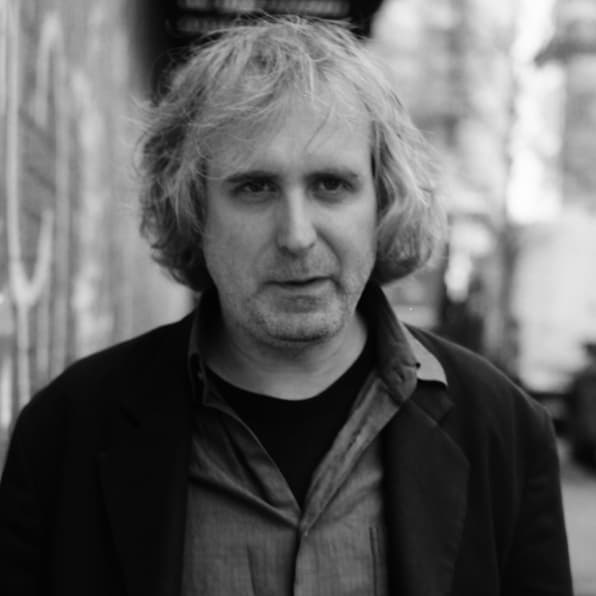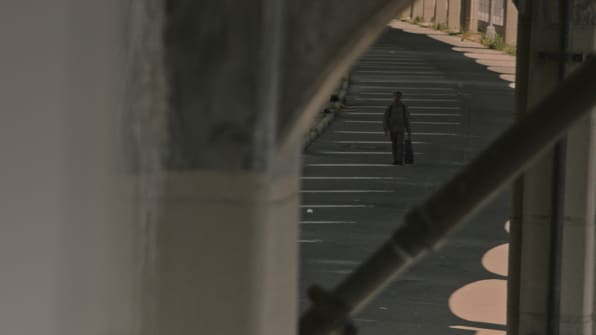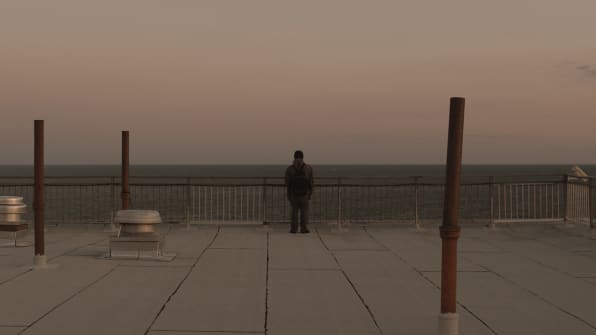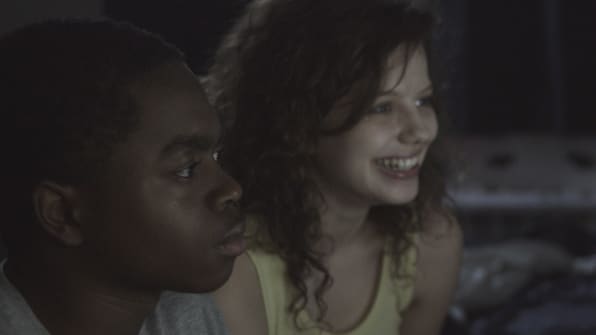New Blood: ‘The Transfiguration’ And The Horror Genre’s Continuing Maturity
Michael O’Shea’s creativity clock was ticking.
After graduating from film school in 1996, O’Shea found work in various production gigs that ultimately left him disenchanted and, soon thereafter, with a laundry list of odd jobs including cab driver and bouncer, and an eight-year stint as a computer repairman. At the behest of his girlfriend, producer Susan Leber, O’Shea began writing again and put himself on a strict deadline: make something happen in 10 years or quit. Six years in, something did happen: O’Shea found financing to make his film. Better still, in 2016, that film went on to be an official selection for the Cannes Film Festival’s Un Certain Regard category.
The Transfiguration follows Milo (Eric Ruffin), a 14-year-old loner who’s convinced he’s a vampire. As Milo’s appetite for blood intensifies, the weight of what it means to get that blood begins to wear him down to a breaking point. The Transfiguration is masterful in its quiet, slow-burning intensity that smudges the line between “horror” and “coming-of-age drama,” which wasn’t necessarily O’Shea’s intention.
“After the first screening, the people that liked it all said, ‘my God–you made such a beautiful film!’ And my first thought was, ‘wait, is a horror movie supposed to be beautiful? Did I screw up somewhere along the line?” O’Shea says. “We briefly discussed [adding more suspense] but enough people were connecting with it so we kept it the way it is.”
Capitalizing on happy accidents and scant resources informed a good portion of O’Shea’s creative decisions in building the world of The Transfiguration. His shoestring budget led to live location shooting across Queens and New York City, where the camera would stay at a distance to capture both scripted moments of the actors and the unscripted reality of their surroundings.

“To me, that’s a way to make a low-budget movie, using your limitations as your strength like shooting on the street,” O’Shea says. “Suddenly my low-budget reality is my production design, which I think gives an authenticity to the entire film.”
Watch The Transfiguration closely and something becomes quite evident: there’s barely a presence of adults in the film–they’re either heard and not seen or vice-versa. Minimizing the adults only magnifies what’s unfurling in the lives of the teenagers and constructs a somewhat eery sense of lawlessness and lack of supervision that pulls the tension tighter.
And again, this was not O’Shea’s initial intention.

“A lot of the scenes that got cut were scenes of adults. I began realizing that was actually a good idea and that we would push it even further. So we began taking out more scenes with adults,” he says. “When I was a teenager, it felt like adults didn’t matter and I was kind of in my own world where you don’t really see adults.”
The Transfiguration is a notable addition to the more recent class of genre-bending horror/thrillers including The Neon Demon, Raw, and Personal Shopper that rely just as much on scare tactics as manipulating pain points in the human condition. What sets The Transfiguration apart, however is just how self-referential it is to its sub-genre. Through Milo’s obsession with “realistic” vampires in films, O’Shea was able to establish a sturdy foundation to build around the vampire myth, creating intricate themes that make multiple viewings of The Transfiguration a necessity.
“What if you were a kid who was becoming a sociopath? You’re going to use confirmation bias on everything–everything that happens in my life is confirmation that I’m a vampire,” O’Shea says. “So the movie Blade, for example, isn’t realistic because that doesn’t apply to anything in my life. But Martin is a realistic movie because he needs a weapon to kill people and drink blood, and that’s something that I use, so that’s a realistic movie–that’s how Milo is viewing the vampire myth.”
As for O’Shea, the vampire myth represents accepting death, in the sense that vampires are faced with the dilemma of continuing to kill others for survival or taking their own death for what it is.

“As our world has become more secular, we’ve somehow forgotten the lesson of that folklore and now we’re having aspirational vampires. We have Twilight, we have The Vampire Diaries, we have vampires that twinkle and they’re beautiful and sexy–we want to be vampires,” O’Shea says. “We want to place ourselves as someone that gets to live forever because we’re so terrified of death. We’ve taken something that was about death acceptance and reversed, so I decided I wanted to make a film that was about being OK with dying.”
That level of layered storytelling, O’Shea says, is the product of maturity. It took 20 years for O’Shea to finally make his first feature, but in many ways, that two decade wait was well worth it.
“I’m a little scared of what I would have made in my 20s. It would’ve been bad because my ego was all over the place,” O’Shea says. “I was on this constant rollercoaster feeling like I was the most brilliant person ever or I was horrible and I sucked and I was a piece of garbage. Going through those two states of minds of complete arrogance and horrible insecurity isn’t the best recipe for being able to direct a film.”

“Giving up on filmmaking in my thirties was a real salve on my ego–I realized I wasn’t going to jump off a bridge because I’m not talented enough,” O’Shea continues. “I became a much more stable human being, and that is incredibly important, being able to look calmly at what you’re shooting. I feel like in my 20s, I may not have been able to do that as well because of all the fear and arrogance. Being older definitely definitely made [The Transfiguration] a much better movie for sure.”
The Transfiguration opens in select theaters this Friday.
(72)














